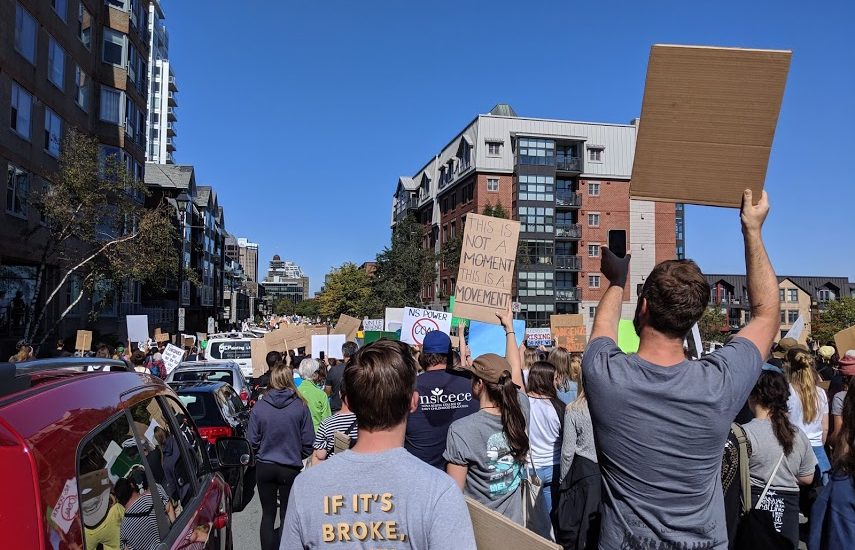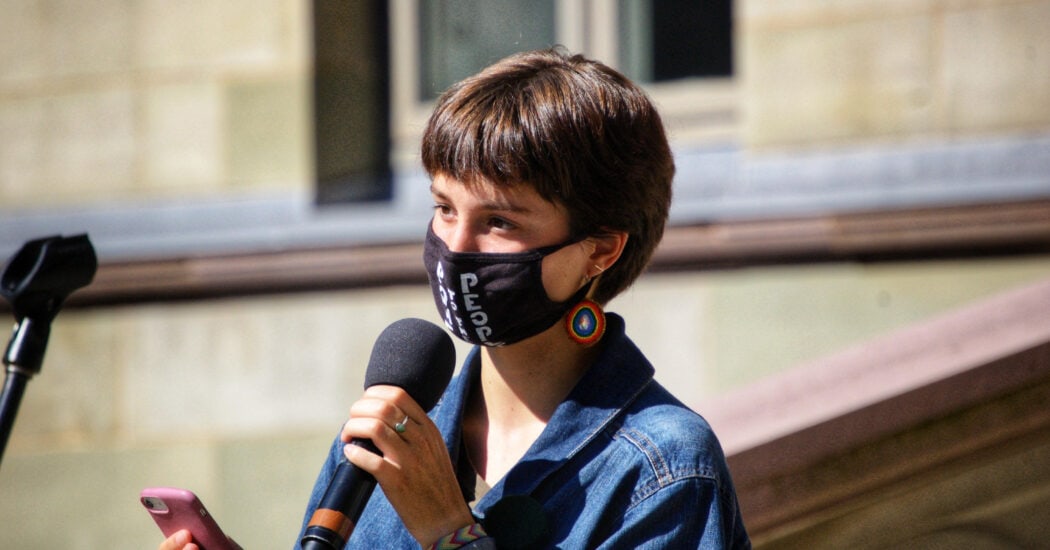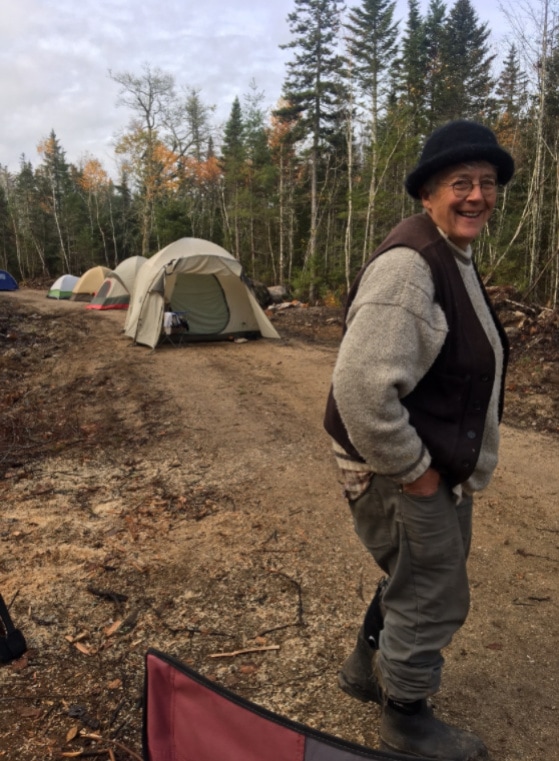
KJIPUKTUK (Halifax) – When I think of activism and movements, I picture a wave. Massive, opaque, but teeming with life of all kinds just below the surface. These waves are made up of many people with different and complex identities, holding different positions in society, with different values and worldviews. It takes all kinds to make the wave, just like the ocean needs all kinds of life to thrive.
Many of the activists leading the environmental fight are queer, members of the 2SLGBTQ+ community. Many are also racialized, disabled, femme, gender queer, trans, women, Black, Indigenous, newcomers, and folks of many marginalized identities.
Their stories need to be told. The movement is powerful, and there is power in being a cohesive wave, but there is also power in the individuals who make up that wave.
Through my own identities I am a member of the 2SLGBTQ+ community, the climate movement, and the feminist movement. But I also work to be an active accomplice to the racial justice movement, Indigenous sovereignty, the disability justice movement, housing justice, and all marginalized communities. That is why I want to bring out the stories of queer folks in Nova Scotia who are in the climate and environmental movement.
For this two-part series I interviewed four incredible and inspiring people involved in various types of climate organizing in Nova Scotia. These people are of various ages and occupy different niches in the movement — the school strike for climate, the forest defenders of Extinction Rebellion Annapolis County, student-led actions and Indigenous sovereignty, just to scratch the surface.
These four activists have depths of knowledge, experience, and perspectives to share. Of course there are many others. Consider this an introduction to some of the brilliant queer minds in the climate and environmental movement.
Julia Sampson and the school strike for climate

Julia Sampson is one of the leaders of the school strike for climate movement in Halifax. Their wake-up call to the climate crisis was spurred by the youth-led climate strike movement in Europe and along with a friend they started the movement in Kjipuktuk in February of 2019.
To Julia, their queer identity led them to be more open to taking risks in organizing.
“Because I’ve had to explain myself and my identity to so many people in my life and with that, defend my identity, it’s been easier for me to be so openly opposed to something and fight for climate justice in such a loud and public way such as striking,” they say.
Julia has found that most of their peers in the climate movement are queer themselves and has found overall acceptance and positive reception of their identity. But the climate movement has many different layers, especially given the different generations, Julia says. “Climate justice is so intersectional I don’t ever feel like I’m fighting for just one issue,” they note.
Many queer folks have experienced trauma as a result of their identities and have to process many layers of emotion and grief, so I asked them to turn to the topic of climate grief and eco anxiety.
Climate grief is grief and sadness that is experienced as a result of the changing climate, fear for the future, and loss associated with the climate crisis. I also asked them to delve into how their climate grief might or might not be connected to their queer identity.
“A lot of my anxiety stems from my queer identity and the trauma of trying to identify myself at such a young age. So I feel like my climate anxiety is very similar in that way that it’s connected to my age as well and a very specific facet of my anxiety”, Julia explains.
It is a unique experience to be a young person growing up in a society riddled with existential angst. For a different experience, I turned to Nina Newington.
Nina Newington and Extinction Rebellion Annapolis County

Nina grew up in Britain in the 1970s and is a member of Extinction Rebellion Annapolis County. She took part in the logging blockade against the clearcutting of lands in Digby County that will destroy habitat of the threatened mainland moose. Nina is also a well known writer of fiction and brings her creativity and eyes for story to her work as an activist.
Nature has always been a part of Nina’s life and often provided her with joy and strength to get through hard times, Nina tells me.
“The thing that had been feeding me my whole life, that connection with nature, which had been a source of joy had also become a source of grief. At some point, I had this moment where I looked up and said, okay I’ll do what I can,” Nina explains.
“Grief, and a sense of responsibility to know that I’m a part of the developed world which has built itself up on using more than its fair share of resources, and a really fundamental feeling of wrongness, that we need to change course for all future generations and for all of nature. I’ve always felt more connected to the natural world than necessarily other human beings.”
She was drawn to Extinction Rebellion because of its focus on direct action and creativity, and also found it to have very clear demands and to be very queer-friendly. As a writer and a queer person she finds that creativity is a crucial element in any movement. Extinction Rebellion seems to have an openness to play, art, and inventiveness which intertwines with queerness in many ways.
Nina’s queerness and artist’s point of view drew her to Extinction Rebellion, but much earlier it also made her connect deeply with nature. As a teenager who was expelled from school and very isolated due to in large part her queer identity, she found solace in nature.
“Feeling so completely alone as a gay teenager in Midlands, England in 1973 also pushed me to be more aware of that profound connection with nature, that saved me then and has saved me through my life,” Nina says.
Nina finds the environmental movement very accepting of her identity, but that hasn’t always been the case. During the first wave of the movement in the 1970s that was much less the case, she says.
To succeed movements need to also be communities of mutual care and solidarity, she says.
Mutual care and compassion build the symbiotic relationships between activists in this movement and strengthen our forces.
Stay tuned for part two of this series. Tomorrow!
With a special thanks to our generous donors who make publication of the Nova Scotia Advocate possible.
Subscribe to the Nova Scotia Advocate weekly digest and never miss an article again. It’s free!



